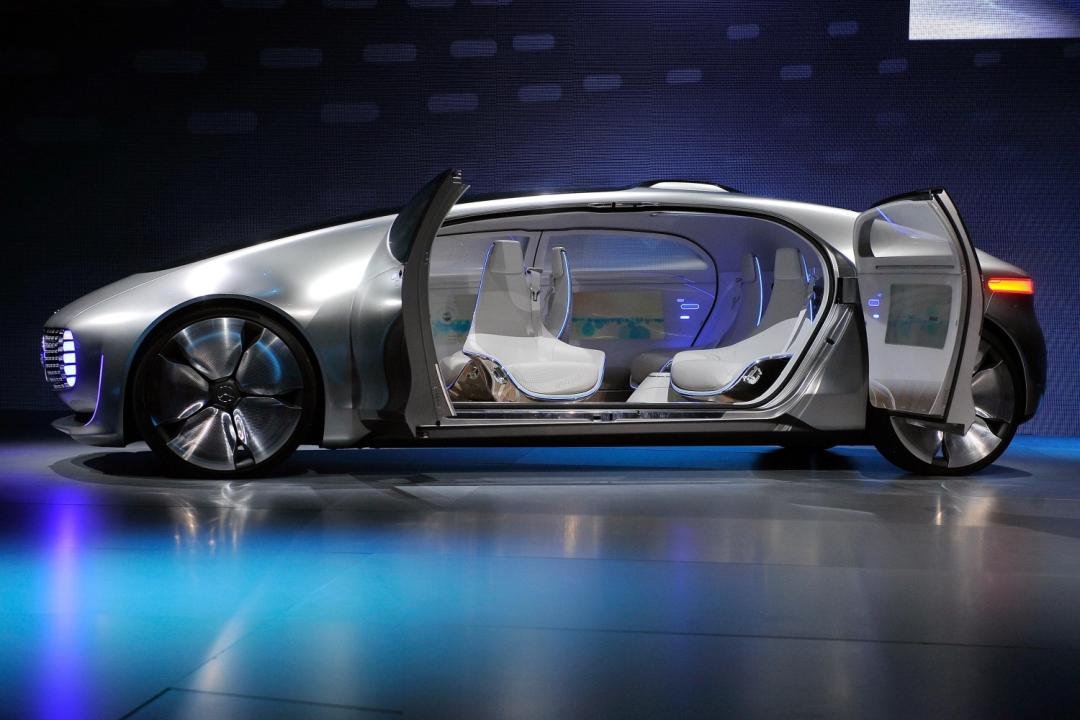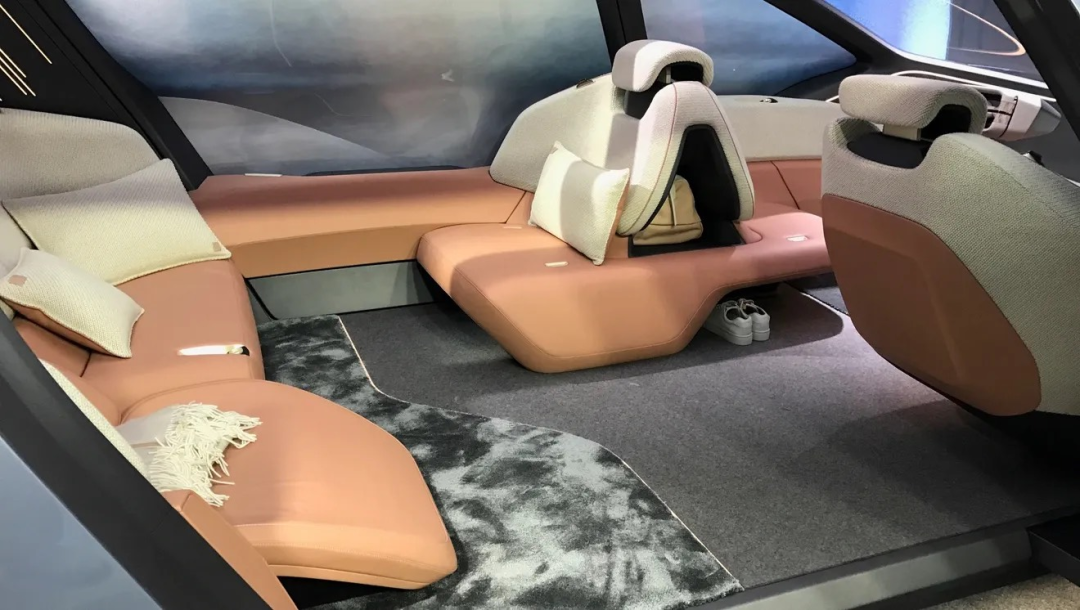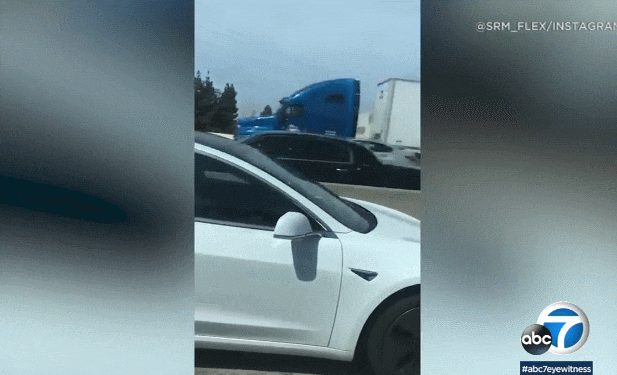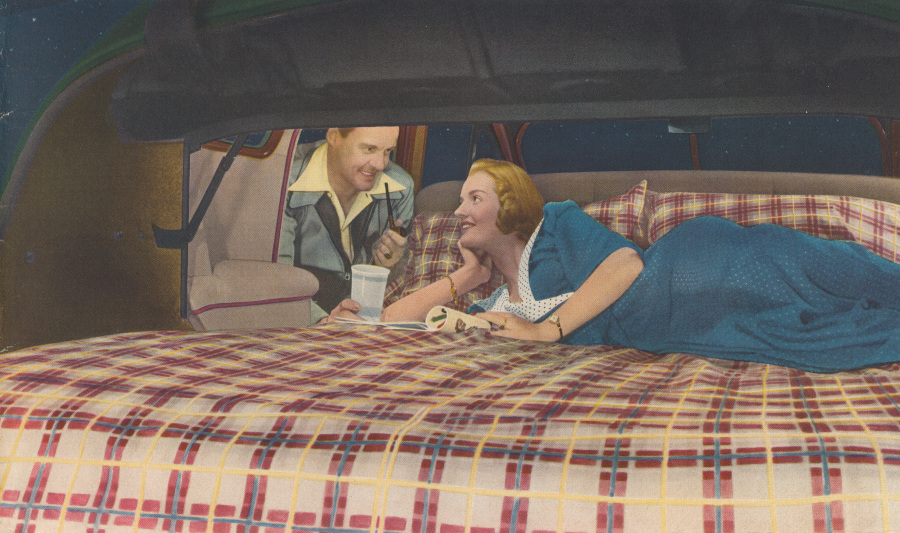*This article is reproduced from the public account of autocarweekly.
Author: Karakush
Last month, XPeng P5 was officially launched.
This “versatile and comfortable smart family sedan” aims to be the “subverter of traditional family sedans”. In addition to providing laser radar at a price approaching 200,000 yuan and gradually marking and testing the NGP function in first-tier cities outside Beijing, it offers a killer feature: the ability to sleep in the car.

With elegant posture and instant access.
You can prepare for sleep within 10-15 minutes: just press a button or use voice control to flatten the main and co-pilot seats, pull up the electric sunshade, turn on the advanced surround sound, and then use the remaining 14 minutes and 59 seconds to install the privacy curtain, spread out the pillow and blanket, and arrange various items.
Although half of the comfort engineering needs to be manually handled, it is still worth choosing this sleep kit at a price of 12,000 yuan, and Camry and Magotan are finding it impossible to compete. The good news is that it is currently free for a limited time.
The kit includes a single bed mattress, a double bed mattress with bed sheet, two pillow blankets, and four memory pillows. It is not sold separately. Compared with a hundred-yuan item on Taobao, its specialty lies in incorporating original custom-made installation concepts, with precise size and fit that ordinary tape measures cannot achieve.
Of course, even if it is personally crafted by He XPeng himself, a price of NT$10,000 is still too expensive if there are no other features to justify it.
The additional features include Nappa leather seats with aviation headrests, fragrance and ambient lights, an electric safety detection system (if the battery level is too low, the sleep mode duration will be restricted), as well as a night light design essential for middle-aged men. If they suddenly need to go to the bathroom at night, when they open the door, the car top reading light will automatically turn on, with “soft light that can provide nighttime visibility without disturbing companions”. The design considers many factors.
Art always originates from life, but also transcends it. Sleeping like this is also an art, and behavioral art is also an art.
According to XPeng’s observation of car-use habits, sleeping in the car is a common scenario. It is not only a daily routine for online car-hailing drivers and delivery drivers, but also an irresistible temptation for every working person who commutes by car.
In the parking lot of XPeng’s headquarters, lines of people sleeping in their cars can often be seen. At lunch break, the intersection of North Keyun Road and Cen Village Honghuagang Street is filled with the fragrance of dreams. To cope with the second half of battles with code, it is necessary to effectively improve the quality of the recovery, and thus P5 was born.
 # Smart Electric Vehicles and Bed Mattresses
# Smart Electric Vehicles and Bed Mattresses
Smart electric vehicles are becoming increasingly similar while also retaining their individual intelligence. Last month, I experienced the upgraded vehicle system from the Ideal Automobile in Beijing. The exhibit showcased a split-type inflatable bed mattress, which has now become a prominent configuration in smart electric vehicles, alongside other features such as mileage range, battery capacity, sensor quantity, and chip computing power.
The official inflatable bed mattress from Ideal Automobile is currently being sold at a discounted price of ¥699 on their app store’s homepage, with a regular price of ¥729. The mattress is designed with a split type, allowing users to switch flexibly between a single bed and a double bed. The manufacturer claims that it only takes 3-5 minutes to inflate and lay out after the user becomes familiar with the product.
An acquaintance working at Ideal Automobile told me, “We rarely mention it, but the Ideal ONE is particularly comfortable to sleep in.” He commutes nearly 100 kilometers a day to and from work, located in Shunyi, and always takes a nap in his car before hitting the highway.
In general, the large and spacious interior of the Ideal ONE makes it comfortable to sleep in. However, it is worth noting that car-bed mattresses have been available for a long while and are not unique to smart electric vehicles. Nevertheless, this “smart sleep trend” seems to be emerging as a new “lifestyle” within the smart electric vehicle industry.
Compared to traditional automobiles, current smart electric vehicles may seem only slightly more convenient with higher integrated functions like air conditioning, seats, sound systems, and more. However, this convenience that is effortless to achieve is precisely what makes it so appealing.
Even Tesla, with its exceptional technology, only offers two sleep-related functions: nap and camp mode. Traditional car-bed mattresses offer a similar experience, so there is no revolutionary breakthrough in this aspect.
It is worth mentioning that Tesla does not have an official bed mattress on the market. The memory foam bed mattress produced by Uncle Xiaote, a known internet personality, is a popular choice among Tesla fans with a retail price of ¥1299. The bed mattress has earned a glowing reputation within the Tesla fan community.
In conclusion, the integration of bed mattresses with smart electric vehicles is becoming a new lifestyle that promotes convenience and comfort.Some friends pointed out that the true difference lies in the underlying logic. In the past, the development of intelligent electric vehicles focused more on the transformation of driving modes, but with the maturity of autonomous driving technology, the next phase of transformation will inevitably penetrate into the interior of the car and reconstruct the space and functional scenarios of automobiles.
For example, in 2015, Mercedes-Benz launched the Concept F015 Luxury in Motion, in which the front seats can rotate backwards, creating a “mobile living room” layout:


This is a classic imagination of the autonomous driving era. Regardless of the age of car companies, they have all made similar designs, such as NIO EVE, a high-end storefront decoration from NIO:

The VISION URBANAUT released by MINI this year is still of this type, but with greatly improved soft furnishings:

In 2018, Volvo showcased its 360c Concept, which also offered a pull-out bed:

With autonomous driving as the end goal, one possible development of automobiles is towards home decoration, becoming a living room, office, or bedroom. Although limited by technological limitations, including sleep, most of them are only value-added functions when the vehicle is stationary, but the exploration of scenarios has already put them on a different path from traditional automobiles.
Of course, this is just one understanding with an industrial perspective.
In reality, sleeping in a car disregards the maturity of the technology.
In 2018, there was news that two police cars in the San Francisco Bay Area were chasing a Tesla Model S on the highway at 3 am. At first, the police detected that it was speeding at 70 mph and wanted to pull it over for a traffic violation, but they found that the driver was sleeping and could not be awakened in any way (it was later found to be driving under the influence), and Autopilot was running autonomously. Finally, the police had to block the car from both the front and back to force it to stop after seven minutes.Translate the Markdown Chinese text below into English Markdown text. Keep the HTML tags inside the Markdown and only output the result in a professional way.

Later, similar events like the AP runaway incident became too frequent to be news anymore.
Some friends carefully plan for a sense of ceremony. If there is no scene, they create one:

More friends just slip through it with a single hand slip:



It is difficult to evade the danger of reckless driving of AP, whether driving a Tesla or an electric car, sleeping is inevitable:



The driver attention monitoring reminder function is not groundless.
A study published in the academic journal Ergonomics in the past two years pointed out that humans are indeed more prone to falling asleep in moving cars, because cars tend to produce shaking during movement, and sustained low-frequency shaking will relax the brain and body.
By observing changes in the driver’s heart rate (an indicator that reflects adjustments made by the nervous system when the body is exhausted), researchers found that drowsiness usually sets in within 15 minutes under continuous vibration of 4-7 Hz, and becomes very significant at 30 minutes. It may be that the brain will synchronize its frequency with the shaking, causing people to enter a drowsy state. Even energetic people cannot resist this kind of head massage.
 Life experience can provide evidence to support this. Friends who are parents know that babies can sleep more soundly with appropriate shaking, which is a long-standing folk wisdom. When I was a baby, my parents would tie me to the washing machine, and I would fall asleep as the machine shook me. No energy was wasted.
Life experience can provide evidence to support this. Friends who are parents know that babies can sleep more soundly with appropriate shaking, which is a long-standing folk wisdom. When I was a baby, my parents would tie me to the washing machine, and I would fall asleep as the machine shook me. No energy was wasted.
Therefore, sleeping in a car may be a fate that humans cannot resist from birth.
Intelligent electric vehicles provide some additional guarantees for this inevitable fate.
It’s not because of the unreliable assisted driving technology. Even sleeping in a stationary gasoline car is a deadly activity, and people die every year from sleeping in a car.

Due to the long-term idling of the engine, gasoline in the cylinder may not burn completely, producing a higher concentration of carbon monoxide, which is brought into the car excessively through the air conditioning vent, and will cause carbon monoxide poisoning when unconsciously inhaled during sleep. If the doors and windows are tightly closed and the air does not circulate, the risk of suffocation is increased.
In a classic Hong Kong crime drama in the 1990s called “Detective Investigation Files II,” there was a case in which a wife and mistress conspired to murder a scumbag by leaking carbon monoxide in a car. Because the crime took a long time, they played as the same woman wearing red clothes in the first and second half, respectively, the one who committed the crime, and then created an alibi to get rid of suspicion.

“Will you die if you sleep in a car?” is a common question on Baidu. The key to reducing the mortality rate is not to close the windows, at least leave a gap.
For intelligent electric vehicles (the gap still needs to be left), as long as the battery does not spontaneously combust, there is no problem of incomplete combustion. Smart cars like XPeng also provide functions such as monitoring CO and CO2 concentration, smart alarms, and smart adjustments. For example, when the CO2 in the car is above the standard, it will automatically switch to external circulation. When the CO2 concentration returns to normal, it will switch back to internal circulation.
Of course, before all these fancy functions, whether it is safe or not, and whether it is a matter of life or death, nothing can stop humans from sleeping in a car.
Once you embrace this setting, you will find that a car may be a tool designed specifically for sleeping.
What kind of mattress do you need:

That’s because you haven’t mastered the mystery of the human body:

At the same time, you may lack imagination:
Or if you’re not that tired:

Just be in good shape:

Cars can accommodate any posture of yours:

Seriously, any posture:

Speaking of postures, we have to open up the topic that you have been holding back for a long time – “car sex”. There are a large number of guidance documents from ancient and modern times and from all over the world, explaining that this is a common civilization for all mankind.
Romance on the car is an ancient dream. In 1941, Nash Ambassador, the hottest luxury car in the United States at that time, its most popular feature was being able to flip the back seat as a bed, the advertisement was like this:


The academic journal “Journal of Sex Research” once published a survey showing that “car sex” is still a popular leisure activity for Americans, with over 60% of male respondents and less than 60% of females having participated in “car sex”.
However, it’s no longer the golden age of “car sex”. The turning point occurred in the 1970s. Due to rising gasoline prices, shrinking car sizes, the closure of drive-in movie theaters, more stringent parking regulations, and urban expansion, “car sex” declined sharply – it became a social problem.
Most of the respondents selected “car sex” not because of the experience, but because they were young and poor, and they mainly explored their lives during high school.


In addition, cars are also a means of privacy for those who want to avoid leaving a trail of identity information, providing a last refuge for some.
I heard a story from a friend a few years ago: during the P2P lending crisis a couple of years ago, someone I knew owed a lot of debt and couldn’t handle it, so he ran away. In order to avoid compulsory execution, he couldn’t use his ID, so he had to stay at friends’ places, and if he really had to go somewhere else, he could only drive and sleep in the car once he got tired of driving.
Many people who do this are not honest people.

But it also helps a lot of helpless people in urgent need. For example, in the early years, when we couldn’t buy train tickets during the Spring Festival, we could sleep all the way back in the car.

In the past two or three years, more and more people in the United States have been sleeping in their cars.
You might think this is snatching a piece of the bourgeoisie’s vestiges:

In fact, it is the chokehold on their survival by Vespucci’s prison:


They are low-income, have no property of their own, and as rent soars, they are forced onto the street. At the same time, there is a shortage of affordable housing in various places, and the waiting list for housing subsidies can often take years, and emergency shelters are often full, making it difficult for them to find a place to live, and cars become a temporary refuge for transition.
However, often they end up not just transitioning for a short while. According to a report from the National Low Income Housing Coalition, the gap between wages and rent continues to grow. In the United States, the average hourly wage needed to afford a two-bedroom apartment is $25, which is more than three times the federal minimum wage of $7.25 per hour.In the top 10 professions in the United States, eight are of medium wage and include retail salespersons, fast-food workers, personal care aides, customer service representatives, and office clerks, none of whom earn enough to afford a one-bedroom rental apartment.

Some communities have even more challenging conditions. For instance, in the Bay Area, San Francisco is the city with the heaviest rent burden in the United States, followed by San Jose and Santa Clara. A worker in the Bay Area needs to work four or more full-time minimum wage jobs just to afford a two-bedroom apartment and still have some money left for food, healthcare and transportation costs.
This means that even with a stable income and job, it may still be impossible for someone to afford housing. Cars provide something stronger than sleeping on the street for them.



However, the increase in the number of people living in cars also brings many problems. Homeless people don’t just include young people who are alone but also entire families with children. How to maintain hygiene, safety, and especially free parking space can be very troublesome. Lucky ones can find spots in church parking lots, but commercial parking lots can either ban parking or have high fees, adding to the economic pressure.
Cities also face a dilemma: on the one hand, they hope to show humanistic care by accommodating the “homeless car population” through lenient laws and parking lots; on the other hand, they must balance the living environment for permanent residents. Some cities have to introduce restrictive regulations. For example, Key West in Florida has a rule that sleeping in a car overnight is illegal.

He XPeng says that except for bathing and going to the toilet, you can spend 23 hours a day in a car. Many people have actually lived such a life, and they don’t need a tech company to guide them in designing a lifestyle in a car. Life itself leaves them no choice.
When you don’t have many choices, you realize the truth: a car is already a perfect sleeping place. It is free, independent, and maintains the last bit of dignity.
#
From a commercial perspective, He XPeng’s words reflect the classic thinking of Internet people: seizing time, entrance, and the commanding heights of consciousness. Then anything is possible.As a result, more and more automakers are incorporating mattresses as a core product in their cars, positioning mattresses as the next big thing. This is an opportunity for automakers not to shape mattresses for cars, but for cars to give new purpose to mattresses, possibly even disrupting the mattress industry.
In 2019, Ford dabbled in mattress technology, launching the Lane-Keeping Bed. Inspired by lane-keeping technology, pressure sensors monitor which side of the bed crosses the centerline and the integrated conveyor belt automatically adjusts the position to redistribute sleeping space, tackling the pain points of sleep separation in modern society.
Studies have shown that a quarter of couples actually sleep better alone. However, most people are prevented from requesting separate beds for various reasons.
In season three of Friends, when Chandler was still with Janice, Chandler told Ross about his desire to achieve sleeping freedom on one side while sleeping, and Ross came up with the classic Hug’n Roll trick.
Unfortunately, Ford’s bed was not mass-produced. it was just one of the inventions in Ford Europe’s Ford Intervention series, aimed at popularizing automotive technology through this kind of sensory experience. Interestingly, the other invention at the time was a noise-canceling dog house, which used automotive silencing technology to provide dogs with a high-quality and quiet living environment. Now a UK company accepts customized orders.
Who says it’s impossible?
This article is a translation by ChatGPT of a Chinese report from 42HOW. If you have any questions about it, please email bd@42how.com.
